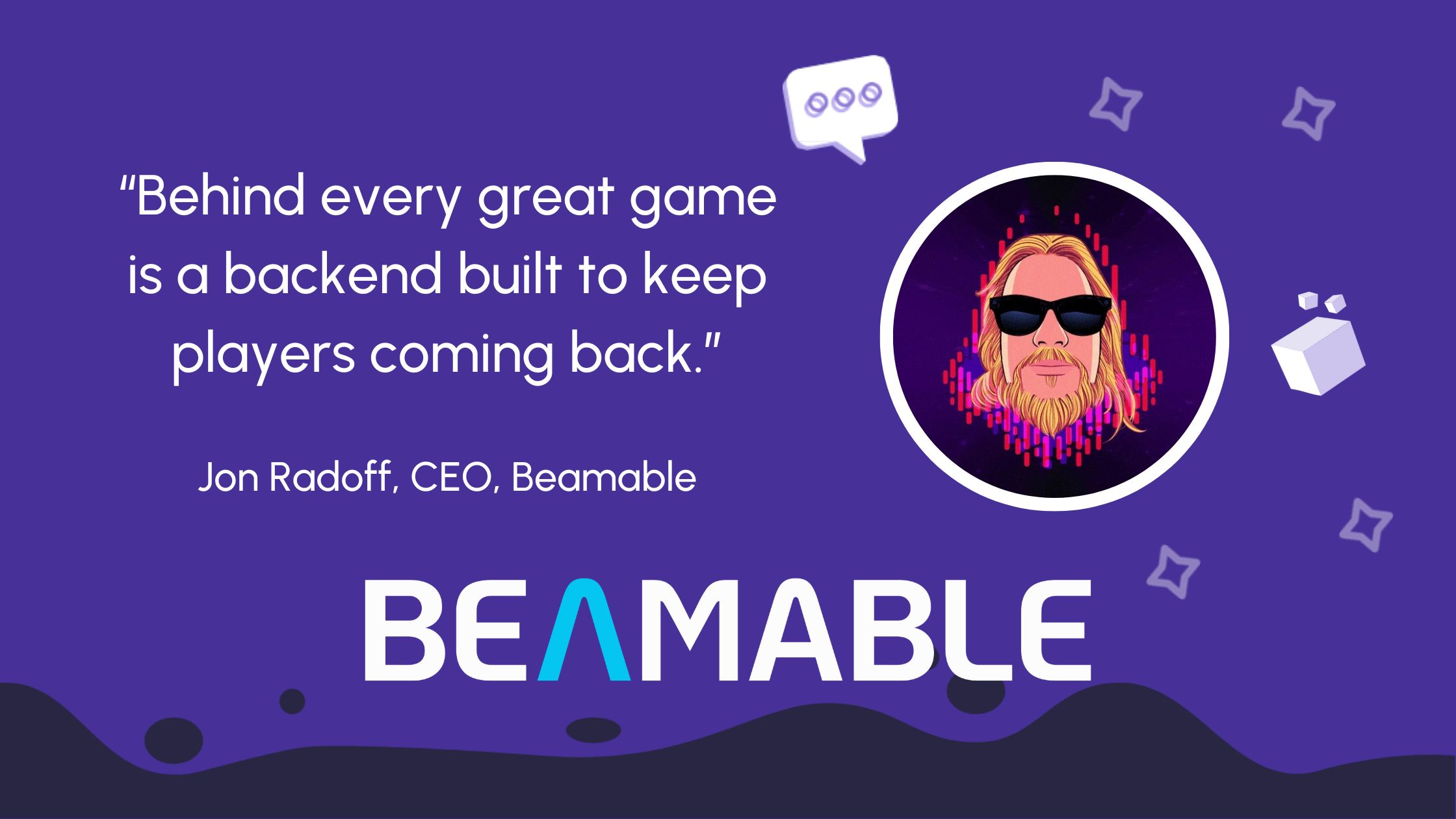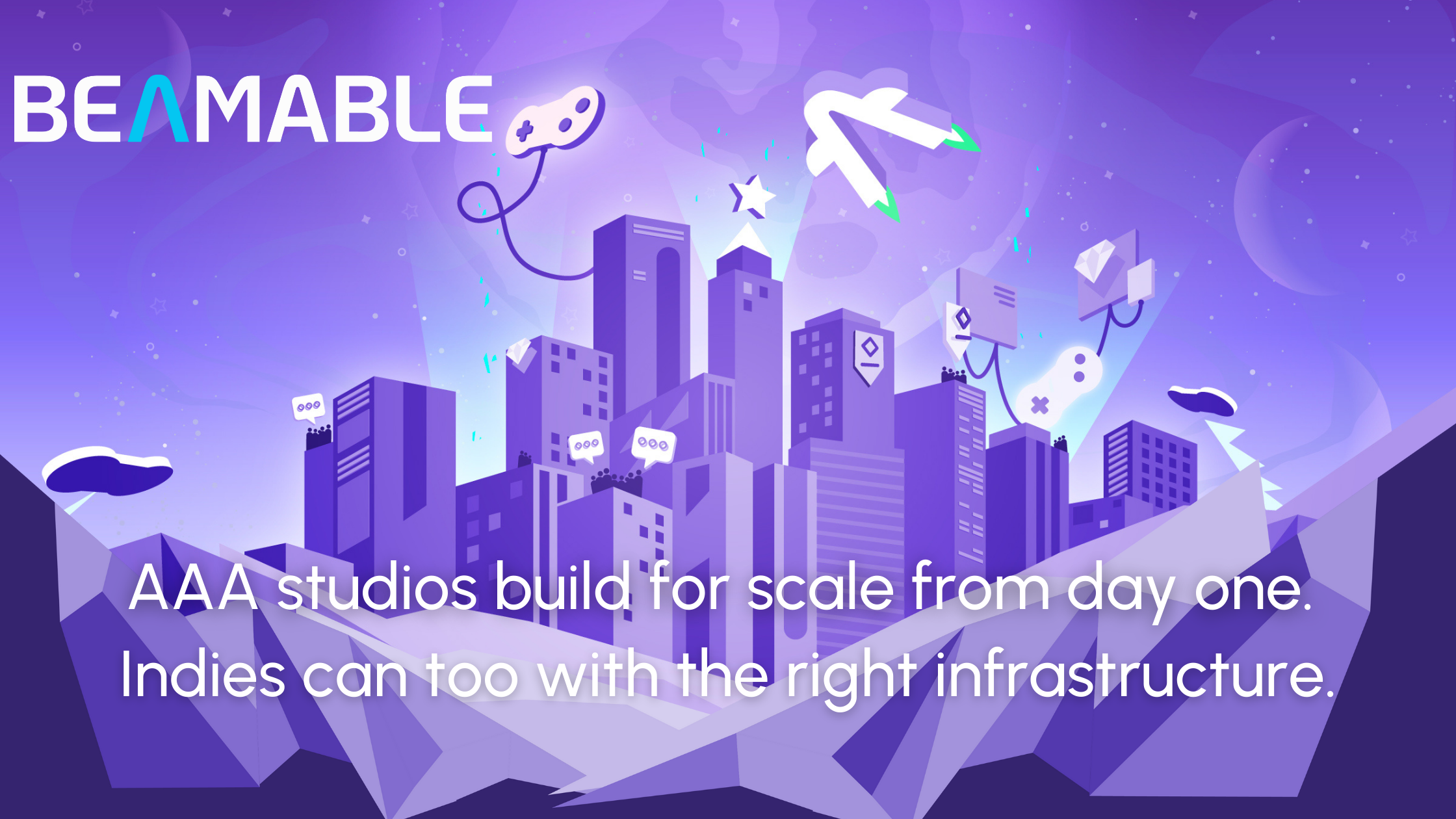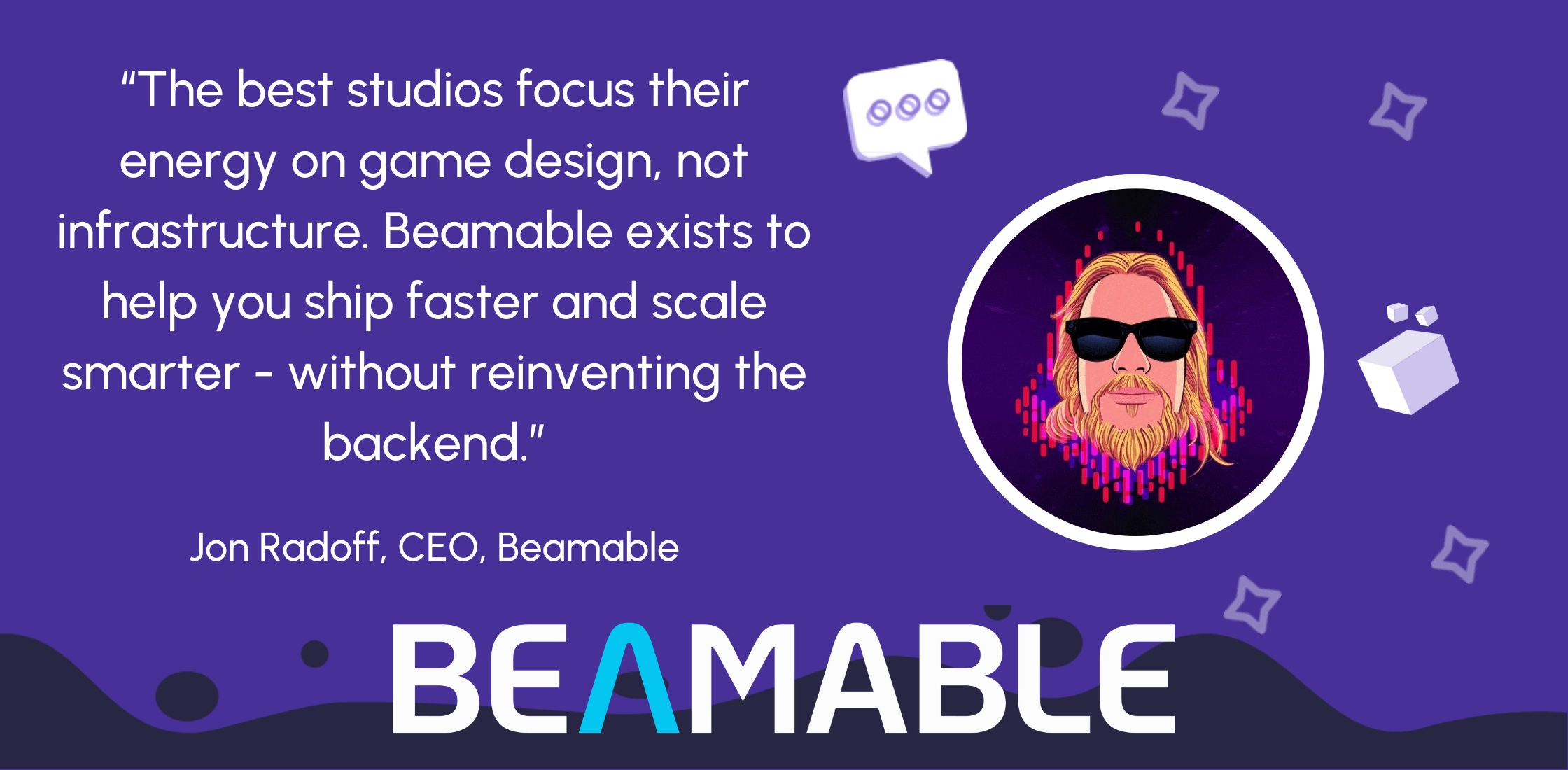Code Your First Video Game in Six Steps!

Code Your First Video Game in Six Steps!
So you want to build a video game! You’ve got an amazing concept, a top-notch storyline and now—it’s time to build. Crafting your own playable experience can be an utterly magical undertaking—but it can also be a massive, daunting process. Like with most things, success begins with having the right plan in place—and the team at Beamable has you covered with six simple steps for coding your very own video game.
1. Choose a Development Interface
It all starts with selecting the right foundation. When it comes to a development interface, you have many options to pick from; the following are some the most popular interfaces:
- ProjectAnarchy, for mobile games
- LWJGL, best for advanced coders
- Roblox, great for those new to game coding and with limited resources
- Unity, offering an ideal balance of flexibility, quality and ease-of-use
If you’re new to the scene, we’d recommend Unity—it offers developers the most versatility for creating just about any game environment on any platform. And as you’ll discover, it pairs beautifully with complementary tools—like Beamable—that make building games even faster and easier.
2. Build Your Engine
Alright—it’s time to construct that game engine! As you begin to build, you’ll need to address a few core areas, including:
- Server selection
- AI for characters
- Graphics rendering
- Game loops
Be sure to give these components enough time and attention, as they will support all your subsequent development efforts.
3. Tell Your Story—and Make It Beautiful!
Not every game needs to tell a sweeping narrative—but any quality game will offer its players a sense of progress. Think about how to reward your players as they complete tasks—weapon upgrades, fast-travel options and aesthetic enhancements can all be leveraged to support forward momentum throughout the game.
You should also think through the visuals, be they 2D images or 3D textures. And don’t forget about the music score and sound effects—all of which enhance the overall gaming experience.
4. Design Your Levels
This is an area where we always recommend starting small—and advancing when you’re ready. Begin by building a simple level, and construct a core path for the player to use while navigating the area. As you progress and grow your skills, you can augment the level of complexity and add higher-end graphics and other elements.
5. Tweak Those Graphics
Once you’ve built your levels and established the core tenets of gameplay, go back and enhance the graphics; incorporating particle effects, creating shaders and adding textures all contribute to a more immersive environment. This is also a good time to conduct a full audit of the game code, and remove any unnecessary lines that may negatively impact the performance of your game.
6. Test, Test, Test!
If you plan to publish your game—and we hope that you do!—it’s critical to conduct player testing. Gather as much feedback as you can, and leverage this information to improve your game. Doing so at this phase will position you for a successful roll-out!
Video Game Coding with Beamable
At Beamable, we want to empower video game developers to create incredible worlds for us all to enjoy! To help get you started, you can choose from one of our sample projects and build on our platform—for free! We offer drag-and-drop prefabs, fully integrated software and a user-friendly web portal that gives you total control of your Unity-based project.
Now go forth and build!




